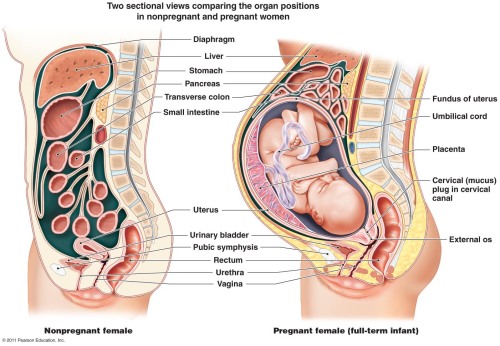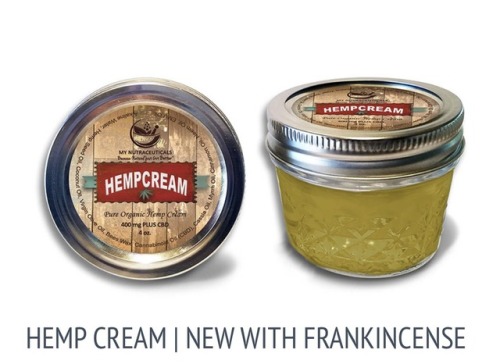#inflammation
BPA exposure during pregnancy causes oxidative stress in child, mother
Exposure to the endocrine-disrupting chemical bisphenol A (BPA) during pregnancy can cause oxidative damage that may put the baby at risk of developing diabetes or heart disease later in life, according to a new study published in the Endocrine Society’s journal Endocrinology.
Bisphenol A is a chemical used to manufacture plastics and epoxy resins. BPA is found in a variety of consumer products, including plastic bottles, food cans and cash register receipts.
Research has shown BPA is an endocrine disruptor – a chemical that mimics, blocks or interferes with the body’s hormones. The U.S. Centers for Disease Control and Prevention have estimated that more than 96 percent of Americans have BPA in their bodies.
Oxidative stress occurs when the body is exposed to high levels of free radicals – highly reactive chemicals that have the potential to harm cells when the body processes oxygen – and the body cannot neutralize the chemicals quickly enough to correct the imbalance. Some environmental toxins such as cigarette smoke, ionizing radiation or some metals may contain large amounts of free radicals or encourage the body to produce more of them, according to the National Cancer Institute at the National Institutes of Health.
“This study provides the first evidence that BPA exposure during pregnancy can induce a specific type of oxidative stress known as nitrosative stress in both the mother and offspring,” said the senior author, Vasantha Padmanabhan, MS, PhD, of the University of Michigan in Ann Arbor, MI. “Oxidative stress is associated with insulin resistance and inflammation, which are risk factors for diabetes and other metabolic disorders as well as cardiovascular disease.”
Almudena Veiga-Lopez, Subramaniam Pennathur, Kurunthachalam Kannan, Heather B. Patisaul, Dana C. Dolinoy, Lixia Zeng, Vasantha Padmanabhan. Impact of Gestational Bisphenol A on Oxidative Stress and Free Fatty Acids: Human Association and Interspecies Animal Testing Studies.Endocrinology, 2015; en.2014-1863 DOI: 10.1210/en.2014-1863
Post link
Brain inflammation a hallmark of autism, large-scale analysis shows
Johns Hopkins study is largest so far of gene expression in autism brains
While many different combinations of genetic traits can cause autism, brains affected by autism share a pattern of ramped-up immune responses, an analysis of data from autopsied human brains reveals. The study, a collaborative effort between Johns Hopkins and the University of Alabama at Birmingham, included data from 72 autism and control brains. It will be published online Dec. 10 in the journal Nature Communications.
“There are many different ways of getting autism, but we found that they all have the same downstream effect,” says Dan Arking, Ph.D. , an associate professor in the McKusick-Nathans Institute for Genetic Medicine at the Johns Hopkins University School of Medicine. “What we don’t know is whether this immune response is making things better in the short term and worse in the long term.”
Post link
Stay Strong #RP! Thanks @naturally_lupie #spoonies #spoonielife #arthritis #ankylosing #spondylitis #chronicillness #invisibledisease #spinalcord #inflammation #infusion #backpain
Post link
“My name is Wendy Krulee and I have Ankylosing Spondilitis (AS)….I blaze the trail for others by learning as much as I can about my disease and by spreading awareness. I will “kick that door in” as Cookie would say and I will kick all the shit off my bucket list when/while I can. I will NOT let this disease rule me. It is not who I am, it is just a portion of me that makes up the whole, good and bad.”
You Go Wendy! AS Warrior
Post link
PSA to all AS Warriors to remember what their fellow AS warrior Jamie Coman said—>
“I have had ankylosing spondylitis for 15 years, along with a few other diseases. People often say I don’t look sick, or you’re too young to have that many things wrong with you. My name is Jamie Coman, and I’m a rock star!”
AND YOU ALL ARE!
Post link
What a powerful image…“I didn’t know my son took this photo until this morning when downloading from my camera. This was 2 weeks ago when I was barely able to get out of bed due to AS. Makes me want to cry thinking about what might have been going through his thoughts that made him decide to take the picture.” ~ Melissa Levanduski #ankylosing #spondylitis #arthritis #inflammation #invisibledisease #chronicillness #rheumatoid #autoimmune #spinalcord #infusion #standtall
Post link

You may try to destroy me but you will fail!
Today I add Rheumatoid Arthritis to my repertoire of challenges.
Hey there reader!
I hope you are well,
My name is Michelle Rocha!
As a Health Coach in training, I’m looking for 6 individuals to provide 6 tailored sessions, for free!
A Health Coach is a supportive mentor and wellness practitioner who helps others feel their best through personalized food and lifestyle changes that meet your unique needs and health goals.
On top of it, I use naturopathic and holistic approaches.
These sessions will consist of:
1. Taking your case
2. What health accomplishments you would like to achieve?
3. How will I be supporting, motivating and helping you become your best self as well as obtaining these goals to improve the quality of your life?
During these session(s) we will be using platforms such as Whatsapp, Zoom, Skype, Email to interact with each other.
These health goals can be something you always wanted to reach!
Examples of that can be weight loss, improving your diet, gut health, reducing stress and/or anxiety, detox, IBS help, diabetes management, Rheumatoid arthritis, Psoriasis, fertility, reducing chronic inflammation, sleeping regulation, etc.
I will be using your case as practical assignments to my College.
Your cases are going to be kept confidential and in private on a lock filing system that I have provided.
I will continue to keep your personal information and details private even when presenting your case to the College.
Are you ready to transform yourself into your best version?
Send me a message if you are interested or if you would like more information!
Much Love,
Michelle
Researchers look at the use of intravenous immunoglobulin for treatment of Kawasaki disease and multisystem inflammatory syndrome in children, a rare reaction to SARS-CoV-2
Kawasaki disease (KD) is rare, with fewer than 6,000 diagnosed cases per year in the United States. It is most common in infants and young children and causes inflammation in the walls of some blood vessels in the body. KD is a common cause of acquired heart disease in children around the world, causing coronary artery aneurysms in a quarter of untreated children.
Multisystem inflammatory syndrome in children (MIS-C) is also rare, a life-threatening illness that follows exposure to severe acute respiratory syndrome-related coronavirus 2 (SARS-CoV-2). MIS-C is characterized by the acute onset of fever and variable symptoms, including rash, cardiovascular complications, shock and gastrointestinal symptoms, including abdominal pain, diarrhea and vomiting.
KD and MIS-C share several clinical features and immune responses. Both conditions are treated with intravenous immunoglobulin (IVIG), a therapeutic containing antibodies purified from blood products. Antibodies in the blood protect us from a number of viral, bacterial and fungal pathogens, but when administered as IVIG, can also suppress excessive inflammation. How it does this is an ongoing area of research worldwide.
In a pair of new studies, published online October 26 and August 31, 2021, two collaborating teams of researchers at University of California San Diego School of Medicine examined the use of IVIG in two groups; one group used a second dose of IVIG in children with KD who do not respond to the first dose of the drug, and the other group used IVIG as an effective treatment for MIS-C.
“Our research teams looked further into KD to improve treatment, and then used what we know about that disease to advance science in another illness,” said senior author Jane C. Burns, MD, professor and director of the Kawasaki Disease Research Center at UC San Diego School of Medicine and Rady Children’s Hospital-San Diego.
“Same Treatment Tested for Kids with Kawasaki Disease and Rare COVID-19 Reaction”
Fatty fish, for the fans of seafood, is nothing short of a blessing – it is the perfect combination of health and flavor coming together to tickle the taste buds while nourishing the body at the same time. Some of the healthiest varieties of fatty fish, like salmon, sardines, and mackerel, are rich sources of omega-3 fatty acids, proteins, vitamin D, and B6. And according to new research, the omega-3s found in fish like salmon could be the key to a lower risk of potentially fatal heart problems.
Last time I posted about the benefits of the high CBD Hemp Paste I’m a distributor for, a few people mentioned they’d like to see a topical version. Here it is! According to My Nutra, “our new Hemp Cream recipe is now available for purchase and now has even more healing benefits with the addition of 100% pure Frankincense essential oil. Frankincense is known to work wonders to smooth and nourish our skin as well as relieve stress, reduce the appearance of scars, and fight inflammation and pain. There is approximately 100 mg of CBD in every ounce of lotion, or 400 mg of CBD in each 4 oz jar. This cream-based lotion consists of CBD (cannabinoids), organic bees wax, and other organic oils and essential oils. You can use this product for various skin irritations, rash, eczema, muscles aches, inflammation and many other topical needs. There is a hint of a cinnamon and frankincense aroma that accompanies this all natural product.”
.
Message me if you have questions, or to purchase go to www.mynutra.com/marjorie
Directions for Topical Use:
Apply lotion directly to troubled areas by gently rubbing a small amount onto your skin wherever you want help. Do this 3 times a day for a week. Then apply 2 times a day for another week. Apply once a day for continued relief. It is common to take a few weeks to build up CBD into your body chemistry to get best results.
A little lotion goes a long way.
Post link

(Image caption: Microelectrodes measured inflammation’s effect on brain serotonin levels. Credit: Hashemi Lab/Imperial College London)
Histamine could be a key player in depression, according to study in mice
Bodily inflammation dampens levels of a ‘feel-good molecule’ and antidepressants’ ability to boost them, according to new research in mice.
Thefindings, from researchers at Imperial College London and University of South Carolina, add to mounting evidence that inflammation, and the accompanying release of the molecule histamine, affects a key molecule responsible for mood in the brain – serotonin.
If replicated in humans, the findings – which identify histamine as a ‘new molecule of interest’ in depression – could open new avenues for treating depression, which is the most common mental health problem worldwide.
Inflammation – a blanket term describing an immune response – triggers the release of histamine in the body. This increases blood flow to affected areas to flood them with immune cells. While these effects help the body fight infections, both long-term and acute inflammation is increasingly linked to depression.
Inflammation accompanies infections but can also be caused by stress, allergic responses and a host of chronic diseases such as diabetes, obesity, cancer and neurodegenerative diseases.
Lead author Dr Parastoo Hashemi, from Imperial’s Department of Bioengineering, said: “Inflammation could play a huge role in depression, and there is already strong evidence that patients with both depression and severe inflammation are the ones most likely not to respond to antidepressants.
“Our work shines a spotlight on histamine as a potential key player in depression. This, and its interactions with the ‘feel-good molecule’ serotonin, may thus be a crucial new avenue in improving serotonin-based treatments for depression.”
Chemical messengers
Serotonin, often referred to as the ‘feel-good molecule’, is a key target for depression-tackling drugs. Commonly prescribed selective serotonin reuptake inhibitors (SSRIs) inhibit the re-absorption of serotonin in the brain, allowing it to circulate for longer and improve mood.
However, although SSRIs bring relief to many who take them, a growing number of individuals are resistant to their effects. Researchers think one reason for this could lie in the specific interactions between chemical messengers, or neurotransmitters, including serotonin and histamine.
With this in mind, researchers set out to investigate the relationship between histamine, serotonin, and SSRIs.
They created serotonin-measuring microelectrodes and put them into the hippocampus of the brains of live mice, an area known to regulate mood. The technique, known as fast scan cyclic voltammetry (FSCV), allowed them to measure brain serotonin levels in real time without harming the brain, as they are biocompatible and only five micrometers wide.
After placing the microelectrodes, they injected half the mice with lipopolysaccharide (LPS), an inflammation-causing toxin found in some bacteria, and half the mice with a saline solution as a control.
Brain serotonin levels dropped within minutes of LPS injection, whereas they remained the same in control mice, demonstrating how quickly inflammatory responses in the body translate to the brain and affect serotonin. LPS is unable to cross the protective blood-brain barrier and could therefore not have caused this drop directly.
On further examination they found that the histamine in the brain was triggered by the inflammatory response and directly inhibited the release of serotonin, by attaching to inhibitory receptors on the serotonin neurons. These inhibitory receptors are also present on human serotonin neurons, so this effect might translate to people.
To counter this, the researchers administered SSRIs to the mice, but they were much less able to boost serotonin levels than in control mice. They posited that this is because the SSRIs directly increased the amount of histamine in the brain, cancelling out its serotonin boosting action.
The researchers then administered histamine reducing drugs alongside the SSRIs to counter histamine’s inhibitory effects, and saw serotonin levels rise back to control levels. This appears to confirm the theory that histamine directly dampens serotonin release in the mouse brain. These histamine reducing drugs cause a whole-body reduction in histamine and are distinct from antihistamines taken for allergies, which block histamine’s effects on neurons.
A new molecule of interest
The researchers say that if their work translates to humans it could help us towards eventually diagnosing depression by measuring chemicals like serotonin and histamine in human brains.
They also say the findings open new avenues to explore histamine as a causative agent of depression, including potentially developing novel drugs that reduce histamine in the brain.
Because the work was done in animals, more research will be needed to know if the concepts translate to humans. However, it is not currently feasible to use microelectrodes to make similar measurements in human brains, so the researchers are now looking at other ways to get a snapshot of the brain by looking at other organs which use serotonin and histamine, like the gut.
Pain, which accompanies inflammation, can also change neurotransmitter levels – but previous research shows that in similar models, these changes last a few minutes, whereas the serotonin drop shown in this research lasted much longer, ruling out pain as a reason for the serotonin decrease.
Dr Hashemi added: “Inflammation is a whole-body response and is therefore hugely complex. Depression is similarly complex, and the chemicals involved are affected in myriad ways by both genetic and environmental factors. Thus we need to look at more complex models of depression behaviours in both mice and humans to get a fuller picture of both histamine and serotonin’s roles in depression.”














